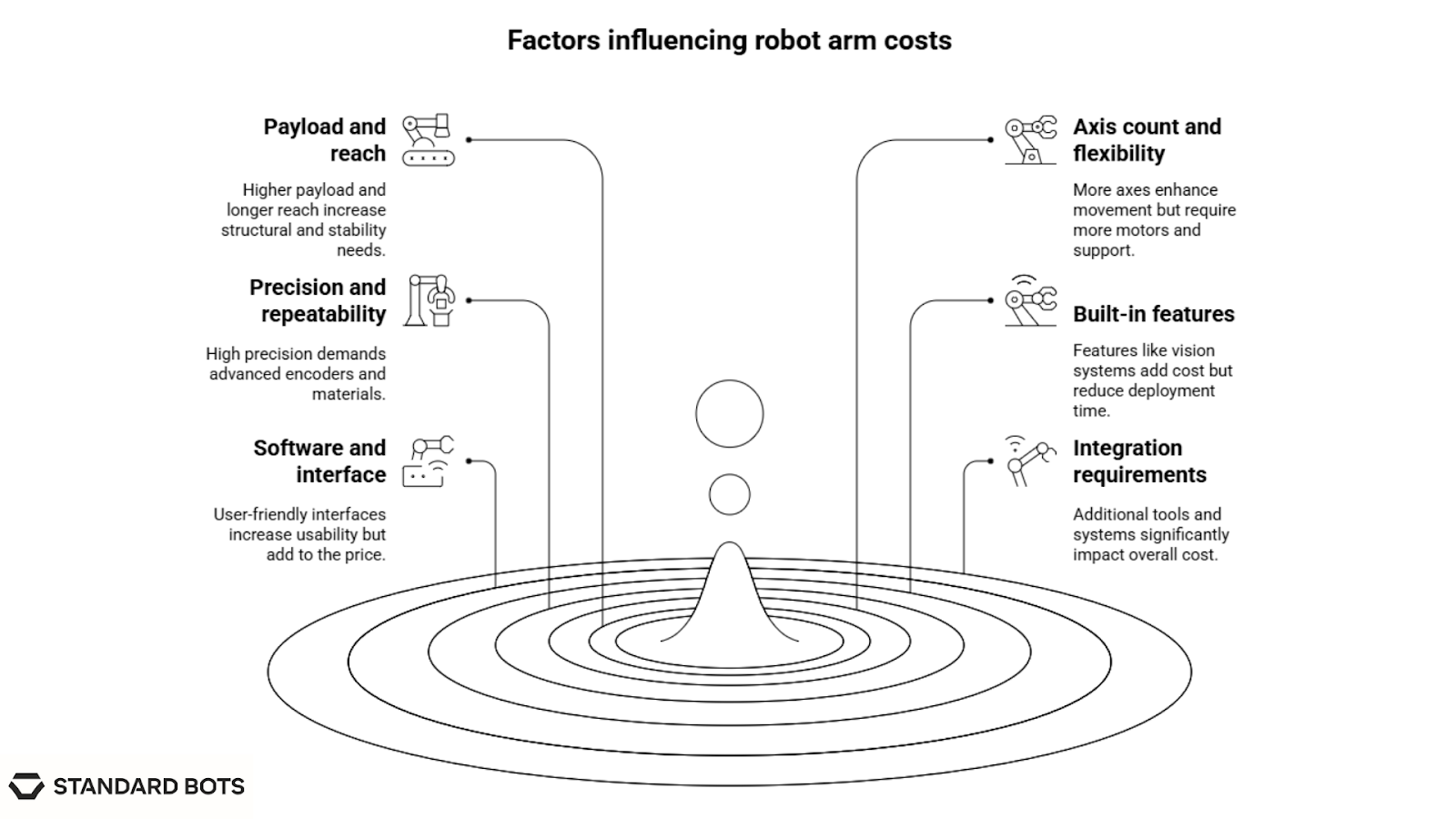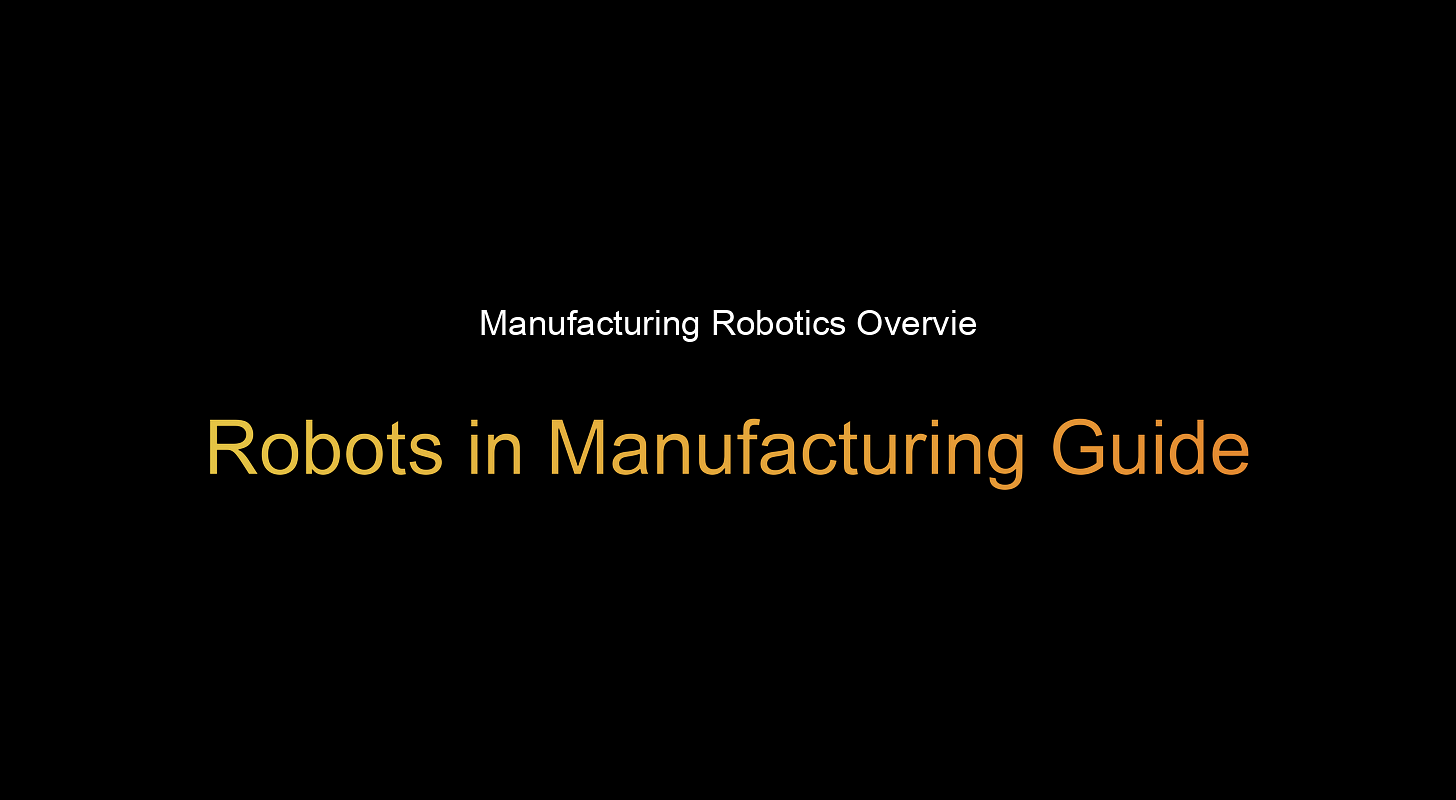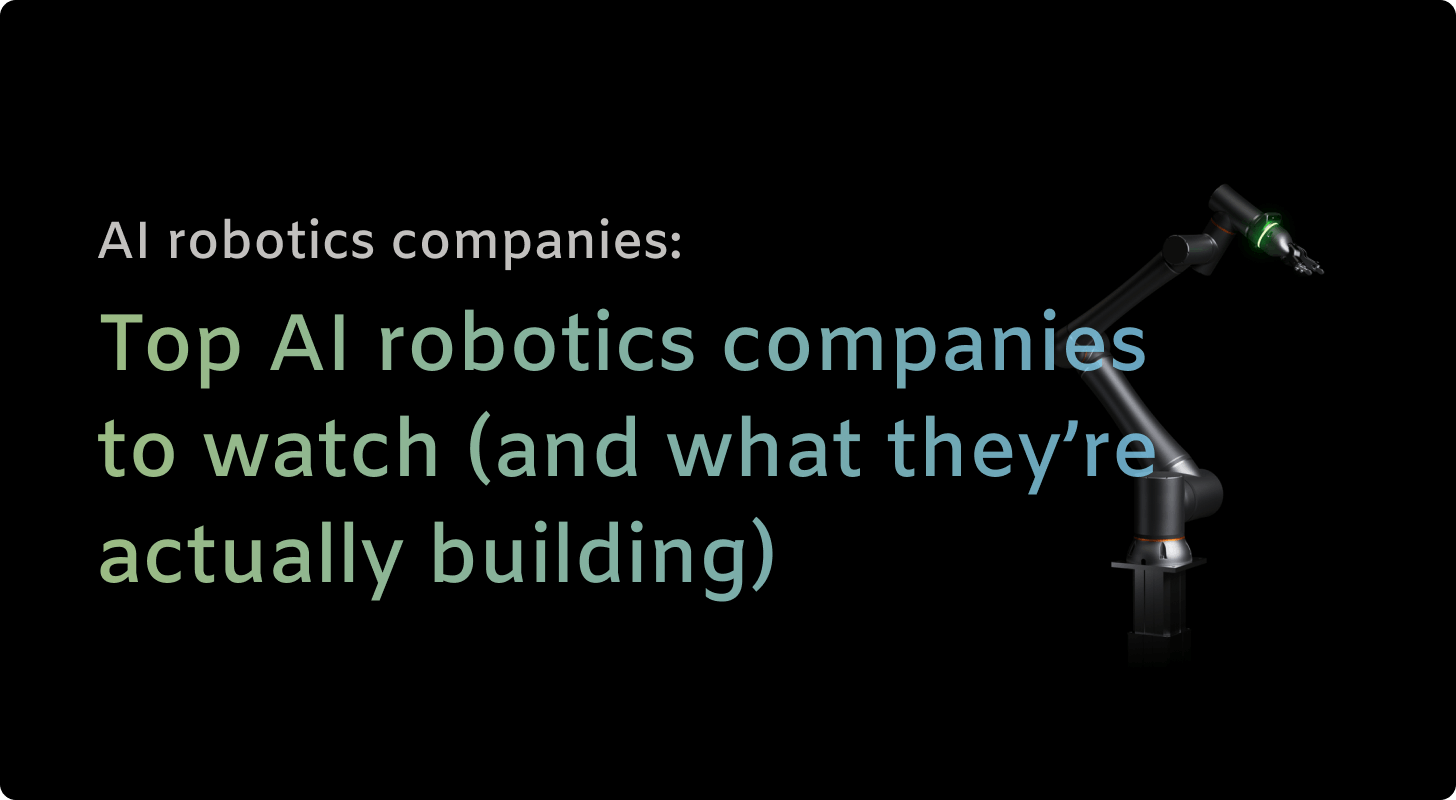Robotic arm prices in 2025 start around $25,000, but high‑end systems can soar past $500,000. The price tag depends on factors like reach, payload capacity, speed, and how complex the robot arm is.
Entry‑level models handle simple pick‑and‑place or testing jobs, whereas fully integrated setups for welding, palletizing, or CNC automation can cost two to three times more. More intuitive software has made automation accessible for many small and mid‑sized factories.
And remember, the real cost isn’t just the arm itself. It’s the complete system, from tooling and safety to integration, that ultimately determines your return on investment.
What drives the cost of a robot arm?
The cost of a robot arm depends on how much weight it can lift, how far it can reach, and how precise it needs to be. Extra features like vision systems, safety tools, and easy-to-use software can raise the price, and the setup cost also increases when you add tooling and other equipment.

- Payload and reach: Arms built for higher payloads require stronger joints and stiffer frames. A robot designed to move 3 kg will cost much less than one built for 50 kg. A longer reach adds torque and stability requirements, which also increase costs.
- Axis count and flexibility: More axes mean more freedom of movement. A 6-axis robot arm can perform complex paths, but also needs more motors, control systems, and structural support, pushing up the base price.
- Precision and repeatability: Robots used in electronics, inspection, or tight-tolerance tasks need ±0.02 mm repeatability. That level of precision demands higher-grade encoders, drives, and materials.
- Built-in features: Vision systems, collision detection, force sensors, and onboard safety raise the price but reduce deployment time. These features are standard on some cobots, optional on many industrial arms.
- Software and interface: Robots that offer drag-and-drop or no-code interfaces are easier for teams to use without programming knowledge. That simplicity adds value but also cost.
- Integration requirements: The robot alone is just one part of the setup. You’ll also need end-of-arm tooling, conveyor links, safety systems, or CNC I/O. These can add $10,000 to $50,000 or more, depending on complexity.
Robot arm prices by category
1. Collaborative robot arms (cobots)
Cobots are built to safely operate alongside humans without the need for safety cages or fencing. They’re typically lightweight, easy to install, and designed with built-in safety features like torque sensing, vision systems, and user-friendly interfaces.
Because they don’t require complex integration, they are popular in small factories, labs, and even in warehouse automation for machine tending, pick-and-place, and inspection. They’re often programmable with no-code tools, making them ideal for businesses without in-house robotics expertise.
Cobots support payloads up to ~20 kg and excel in flexible, reconfigurable environments.
Price: $25,000 to $75,000
Installed cost: $40,000 to $150,000
Best for: Safe, flexible setups with no fencing required
Example: RO1 ($37,000): 18 kg payload, 1.3 m reach, built-in vision and no-code programming
2. Industrial robot arms
Industrial robot arms are built for speed, precision, and high payloads in manufacturing settings. Unlike cobots, these systems need safety enclosures and professional integration. They’re used in welding, palletizing, CNC machine tending, and high-speed pick-and-place jobs.
These robots have longer reach and heavier payload capacity, and frequently operate in harsh or repetitive environments. Even though the base unit may seem affordable, complete deployment, including fencing, control cabinets, grippers, and custom programming, can be significantly more expensive.
Price: $50,000 to $200,000
Installed cost: $150,000 to $500,000
Best for: High-throughput industrial automation with heavy-duty cycles
Examples: FANUC M-20iD (~$40,000), ABB IRB 2600 (~$45,000), KUKA KR 10 R1100 (~$50,000)
3. Prosthetic and assistive robotic arms
Prosthetic and assistive robotic arms represent a specialized medical robotics segment, blending robotics with rehabilitation and medical science. These robotic arms aim to restore mobility and independence to users with limb loss or neuromuscular conditions. These systems include advanced myoelectric sensors, neural interfaces, or AI-driven motor control to mimic human movement.
Prices vary depending on functionality, medical certification, and integration with healthcare systems. Cutting-edge prosthetics, especially those funded by research initiatives like DARPA, can exceed six-figures due to the use of embedded sensors, haptic feedback, and AI adaptation.
However, regions have different availability, and insurance coverage varies based on medical policies and use cases.
Price: $10,000 to $100,000+
Best for: Medical rehabilitation and human-assistive tasks
Operating costs and annual maintenance
Operating costs and annual maintenance for robotic arms include electricity, about $500–$1,000 per year, depending on the workload. Companies typically spend 5–12% of the robot’s price on annual maintenance (~$4,500 for a $60K system), which includes recalibration, lubrication, and inspections. Operating costs and maintenance can also include spare parts and operator training.
Once the robot is up and running, annual costs are generally predictable. Compared to manual labor or complex machinery, robot arms are low-maintenance, but the costs still add up, especially with higher usage or multi-shift production.
1. Power consumption
Most industrial and collaborative arms consume very little electricity. A typical six-axis cobot used in standard machining or assembly work adds less than $500/year to your power bill. Even heavier-duty robots operating full-time rarely push beyond $1,000 annually.
2. Maintenance and servicing
Preventive maintenance includes recalibration, lubrication, visual inspections, and sensor checks. This generally runs 5–12% of the robot’s base price per year.
For a $60,000 system, that’s around $3,000 to $6,000 annually, depending on runtime and workload. Some vendors bundle support into service contracts, but others charge for diagnostics and on-site visits.
3. Spare parts and wear items
Grippers, seals, joints, belts, and control cables wear out faster under constant load. Replacement cycles vary, but most shops budget $3,000 to $10,000 per year for parts and small fixes. Robots in abrasive or high-dust environments may need more frequent part replacement, especially if handling sharp edges, fluids, or high temperatures.
4. Operator training
Training is often overlooked but essential for long-term efficiency. Some cobots, like RO1, come with built-in tutorials and user-friendly interfaces that reduce the learning curve.
Still, expect to spend $500 to $3,000 per operator for onboarding and skill refreshers. Complex applications or custom programming may require additional vendor-led sessions.
You can find full system cost considerations, including these operational items, in our robot machine pricing breakdown.
What is a robot arm?
A robot arm is a programmable mechanical device that mimics the movements of a human arm. Robot arms are commonly used in manufacturing, surgery, and other fields where precision and repetition are important.
Most robot arms have multiple joints and segments, which allows them to move in different directions. They follow pre-programmed instructions controlled by software to complete tasks like lifting, rotating, or placing objects.
Robot arms can range from simple two-axis machines to complex six-axis systems that move like a human arm. Many also include sensors or cameras for precision and work with tools like grippers or welding torches.
Should you buy or build a robot arm?
- Buying a robot arm: Buying makes sense if you’re planning to use the robot full-time across a stable workflow. You get full control over the system, qualify for depreciation, and own the hardware outright.
- Building your robot arm: Building your robot is technically possible using kits or off-the-shelf components. But in most cases, it doesn’t make financial sense.
By the time you buy actuators, frames, encoders, sensors, and controllers, you’re already spending $20,000 to $30,000, and you still need to write control software, manage safety, and troubleshoot issues.
What do robot arms cost in real deployments?
In most cases, hardware is just the starting point. These figures include complete deployment: installation, safety systems, software, and integration into existing workflows.
For example, a small shop replacing one CNC operator per shift with a cobot can offset labor costs by $40,000 per year. That alone cuts the payback window to under two years. In multi-shift or multi-cell environments, that timeline drops further.
CNC machine tending deployments with RO1 or similar cobots typically show ROI within 18 to 24 months. Larger welding or palletizing systems require higher upfront investment but bring faster cycle times and 24/7 reliability.
How to calculate ROI on a robotic arm
The simplest ROI formula compares cost savings from labor and efficiency gains against the total investment. But in practice, robot arms impact more than just payroll.
1. Labor savings
A single robot working two shifts can replace one full-time operator. That’s around $40,000 to $80,000 per year in wages, benefits, and overtime. In many industries, the true value is even higher when factoring in reduced turnover, onboarding, and sick leave.
2. Productivity gains
Robots maintain steady cycle times across all shifts. This alone can improve throughput by 20–40%, depending on task type. In lights-out setups, shops run overnight without adding labor, effectively doubling output.
3. Error reduction and safety benefits
Robots don’t suffer from fatigue or distraction. They make fewer mistakes and reduce rework. This not only improves product quality but also lowers injury risk for repetitive or dangerous tasks like welding or part loading.
4. Energy efficiency and uptime
Modern robots use energy efficiently and offer near-constant uptime. While a human might pause for breaks or shift changes, robots keep production moving. This consistency leads to smoother scheduling and better equipment performance.
Where should you use a robot arm first?
If you're new to automation, the best place to use a robot arm is with repetitive, high-volume tasks that eat into your labor budget.
Robot arms are ideal for:
- Welding and torch handling
- Palletizing boxes or heavy parts
- Inspection, testing, and measurement
- Loading and unloading CNC machines
- Pick-and-place for assembly or packaging
These are the jobs where cobots like RO1 make the fastest impact. You get consistent performance, fewer errors, and the ability to run longer hours without extra headcount.
Cobots are easy to install, simple to program, and are designed to work alongside your team. The RO1 costs less than most annual operator salaries and includes built-in vision, force sensing, and no-code programming.
Final thoughts
Robot arms in 2025 are practical tools for small and mid-sized manufacturers. Models like the RO1 deliver precision, built-in safety, and flexible deployment at under $40,000, without requiring complex engineering or custom setups.
The question isn’t whether you can afford a robot, but where it delivers value. If your machines sit idle or labor costs are rising, automation can pay for itself in under two years.
Next steps with Standard Bots
Looking to automate without spending six figures on setup and integration? RO1 by Standard Bots gives you everything you need in one affordable, powerful package.
- Affordable and adaptable: RO1 costs $37K (list). Get high-precision automation at half the cost of traditional robots.
- Precision and power: With a repeatability of ±0.025 mm and an 18 kg payload, RO1 handles even the most demanding CNC jobs.
- AI-driven simplicity: Equipped with AI capabilities on par with GPT-4, RO1 integrates seamlessly with CNC systems for advanced automation.
- Safety-first design: Machine vision and collision detection mean RO1 works safely alongside human operators.
Book your on-site demo with our engineers today and see how RO1 can bring AI-powered greatness to your shop floor.
FAQs
1. What does a prosthetic robot arm cost compared to an industrial one?
A prosthetic arm costs $10,000 to $100,000+, depending on features like nerve or muscle signal control. Industrial robot arms start at $50,000 and can reach $500,000 fully installed. When factoring in integration, total system cost often reaches $150,000 to $500,000.
2. Why are robot arms still expensive despite automation becoming mainstream?
Robot arms are still expensive because they use high-precision components like servo motors, encoders, gearboxes, and safety-rated motion systems. Tight tolerances, industrial-grade materials, and compliance with CE or ISO standards all add to the final cost.
3. What’s the annual cost to run and maintain a robot arm?
The annual cost to run and maintain a robot arm typically ranges from $3,000 to $10,000. Expect to spend 5–12% of the robot’s purchase price on preventive maintenance, plus $500 to $1,000 for electricity. Additional costs may include spare parts, training, and diagnostics.
4. Where can I buy used or refurbished robot arms?
You can buy refurbished robot arms from certified resellers, automation integrators, or OEM-backed platforms. Look for units with inspection reports, warranties, and support. Used arms are ideal if you're replacing the same model or working with a partner who has handled it before.
5. How long does it usually take to break even after installing a robot?
It usually takes 12 to 30 months to break even after installing a robot. It depends on factors like labor savings, runtime hours, and process efficiency. High-throughput tasks like CNC tending and palletizing typically recover investment faster than assembly or inspection.
6. Are DIY robotic arms a good alternative for business use?
DIY robotic arms are not suitable for business use because they lack safety certification, vendor support, and consistent performance. They may work for research or prototyping, but they fall short in accuracy and uptime needed for commercial production.
Join thousands of creators
receiving our weekly articles.











